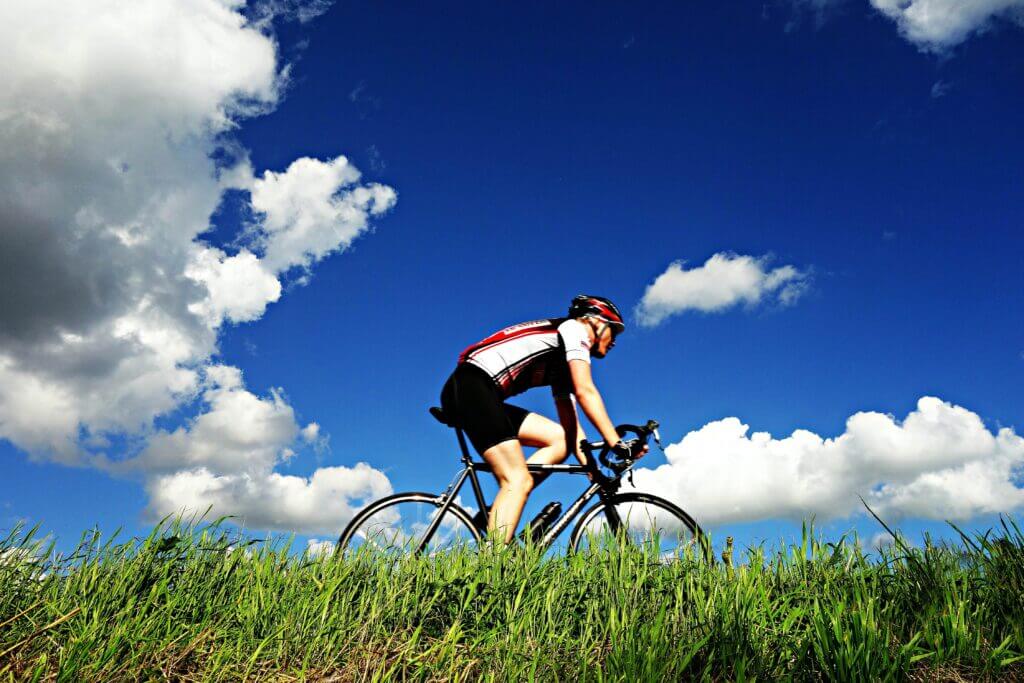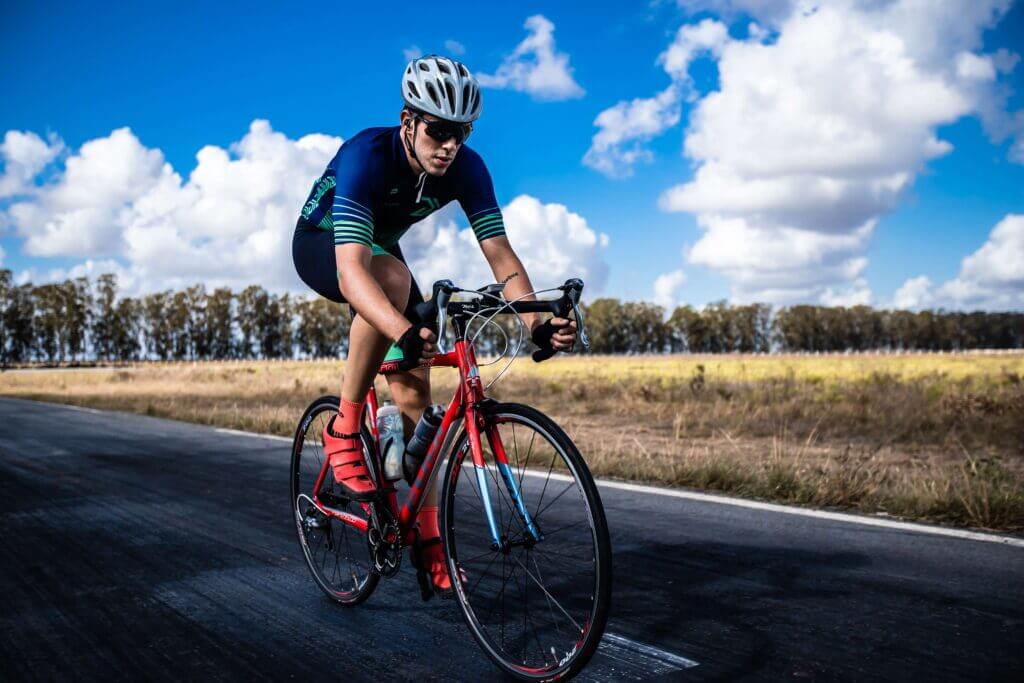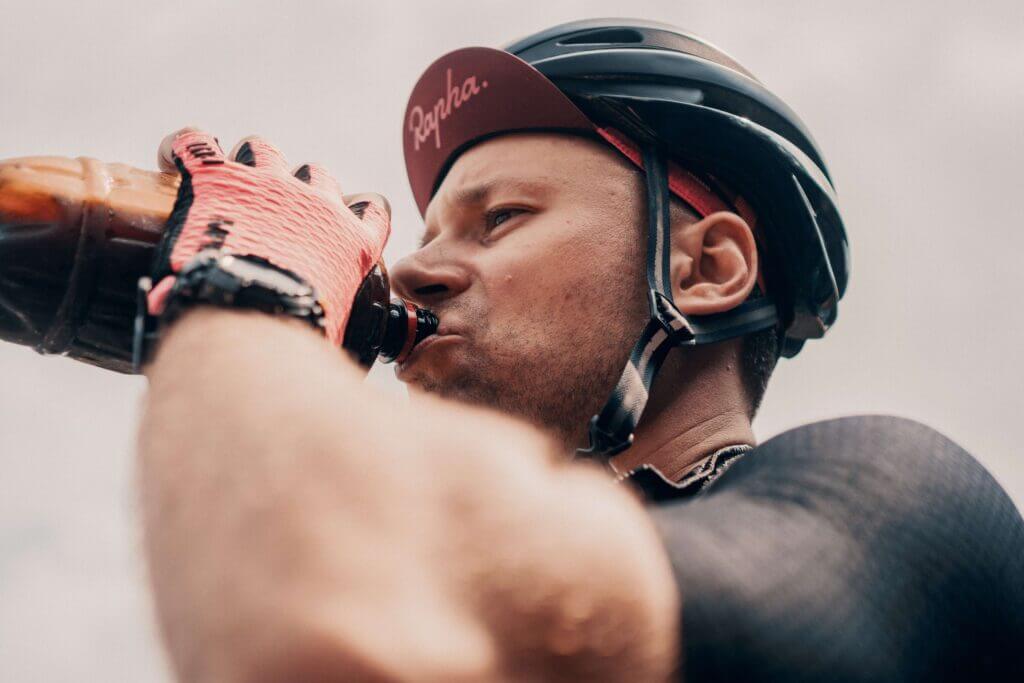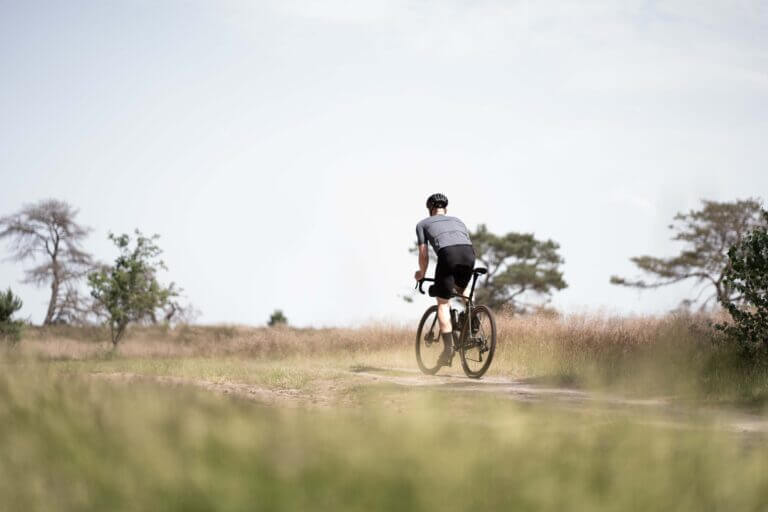Table of Contents
Are you looking for an effective and enjoyable way to shed those extra pounds? Look no further than cycling! Not only is cycling a great form of transportation and recreation, but it also offers numerous benefits for weight loss.
In this article, we will explore the science behind cycling and weight loss, delve into the physical benefits it provides, discuss how to design an effective cycling weight loss plan, and answer some common questions about cycling and weight loss.
By the end, you’ll have all the knowledge you need to incorporate cycling into your weight loss journey and achieve your goals.
Understanding the Science Behind Cycling and Weight Loss
Before we delve into the benefits of cycling for weight loss, let’s explore the science behind how it helps us shed those unwanted pounds. Cycling is a form of aerobic exercise, which means it gets your heart pumping and your breathing rate up.
This sustained physical activity triggers various physiological responses in your body that contribute to weight loss.
During cycling, your muscles require a continuous supply of energy to power your movements. To meet this demand, your body primarily relies on two fuel sources: carbohydrates and fats.
As you cycle, your body initially utilizes readily available carbohydrates stored in your muscles and liver. However, as the intensity and duration of your ride increase, your body starts to tap into its fat stores for energy.
The process of breaking down stored fat, known as lipolysis, increases during cycling. This results in the release of fatty acids into your bloodstream, which are then transported to your muscles, where they are oxidized or “burned” for energy.
This fat-burning process is essential for weight loss, as it reduces your overall body fat percentage.
Furthermore, cycling boosts your metabolism, which is the rate at which your body burns calories at rest. When you engage in regular cycling, your body increases the production of mitochondria, the energy-producing powerhouses within your cells.
With a higher number of mitochondria, your body becomes more efficient at converting food and oxygen into usable energy. Consequently, your basal metabolic rate (BMR) increases, leading to more calories burned throughout the day, even when you’re not actively cycling.

The Benefits of Cycling For Weight Loss
Increased Calorie Burn
Cycling is a highly effective cardiovascular exercise that can help you burn a significant number of calories. The exact number of calories burned during a cycling session depends on various factors such as your weight, cycling speed, terrain, and duration.
On average, a person weighing around 150 pounds can burn approximately 300-600 calories per hour of moderate cycling. If you increase the intensity or ride uphill, you can burn even more calories.
Improved Metabolism
Regular cycling can boost your metabolism, allowing you to burn calories even after you’ve finished your ride. This metabolic boost is attributed to the increased muscle mass and improved mitochondrial function that results from consistent cycling.
When you engage in regular aerobic exercise like cycling, your body adapts by increasing its muscle mass and enhancing the efficiency of its energy systems. As a result, you burn calories at a higher rate, even during periods of rest.
Muscle Toning and Strength Building
Cycling engages various muscle groups, such as the legs, glutes, and core, resulting in improved muscle tone and overall strength. When you pedal, the quadriceps, hamstrings, calves, and hip muscles are primarily activated.
Additionally, the continuous balancing and stabilizing required during cycling engage your core muscles, including the abdominals and lower back. Over time, these muscles become stronger and more defined, contributing to a leaner and more toned physique.
Reduced Body Fat and Increased Lean Muscle Mass
Consistent cycling can lead to a reduction in body fat percentage while increasing lean muscle mass, resulting in a more toned physique. As you engage in regular cycling, your body taps into stored fat reserves to fuel your rides.
This gradual decrease in body fat, coupled with the muscle-building effects of cycling, can lead to improved body composition. It’s important to note that while your overall weight may not change significantly, your body shape and composition can transform positively.

Designing an Effective Cycling Weight Loss Plan
To maximize the benefits of cycling for weight loss, it’s essential to design an effective plan that combines proper nutrition, progressive training, and consistency. Here are some key considerations:
Setting Realistic Goals
Setting achievable and realistic weight loss goals is crucial for long-term success. Determine the amount of weight you want to lose and establish a timeline that allows for steady progress. Keep in mind that losing 1-2 pounds per week is generally considered a healthy and sustainable rate of weight loss.
Incorporating Interval Training
Interval training, alternating between high-intensity bursts and recovery periods, can maximize calorie burn during cycling sessions. Incorporate intervals into your rides by sprinting for short durations followed by periods of active recovery.
For example, pedal at maximum effort for 30 seconds, then pedal at a relaxed pace for 1-2 minutes. Repeat this cycle for the duration of your ride.
Gradually Increasing Intensity and Duration
Gradually increasing the intensity and duration of your cycling workouts is essential to challenge your body and continue making progress. Start with shorter rides at a moderate intensity and gradually increase both the distance and intensity as your fitness improves.
This progressive overload helps prevent plateaus and ensures ongoing improvements in your fitness levels.
Incorporating Strength Training and Cross-Training
Combining cycling with strength training and cross-training activities can provide a well-rounded fitness routine and enhance weight loss results. Strength training exercises, such as squats, lunges, and deadlifts, can target specific muscle groups and boost metabolism.
Increased muscle mass from strength training contributes to a higher BMR, resulting in more calories burned throughout the day. Additionally, cross-training activities like swimming or yoga provide variety, work different parts of your body, and help prevent overuse injuries.
Monitoring Your Progress
Keeping track of your progress is crucial for staying motivated and making necessary adjustments to your plan. Consider using a fitness app or keeping a journal to record your rides, track your distance, duration, and calorie expenditure.
You can also take measurements of your body, such as waist circumference or body fat percentage, to assess changes over time.
Celebrate your milestones along the way, whether it’s completing a longer ride or reaching a specific weight loss target.

The Importance of Balanced Nutrition and Avoiding Overeating While Cycling
While cycling can be an excellent tool for weight loss, it’s crucial to pay attention to your nutrition and avoid overeating. Engaging in intense physical activity can sometimes stimulate your appetite, making it tempting to consume more calories than necessary.
However, understanding the importance of balanced nutrition and implementing strategies to manage your hunger can help you stay on track with your weight loss goals. Here’s why overeating while cycling can hinder your progress and some tips to maintain a healthy balance.
The Calorie Conundrum
Cycling can burn a significant number of calories, especially during longer and more intense rides. It’s easy to fall into the mindset that you deserve to indulge in large quantities of food to compensate for the energy expended.
However, overestimating the number of calories burned or using cycling as an excuse to overeat can undermine your weight loss efforts.
The Hunger Factor
Intense exercise like cycling can increase hunger and appetite, leading to a desire to consume more food. This is particularly true if your rides are longer in duration or if you engage in high-intensity interval training.
While it’s essential to refuel your body adequately after a ride, it’s crucial to strike a balance and avoid excessive calorie consumption.
Quality vs. Quantity
When it comes to nutrition, it’s not just about the number of calories but also the quality of the food you consume. Opting for nutrient-dense, whole foods can provide the necessary fuel for your rides while supporting your overall health and weight loss goals.
Avoid falling into the trap of filling up on empty calories from processed snacks or sugary drinks, as they can hinder your progress and leave you feeling unsatisfied.

Tips for Managing Hunger and Maintaining Balance
Plan Your Meals and Snacks
Prepare nutritious meals and snacks in advance to have them readily available when hunger strikes. Opt for a combination of lean proteins, whole grains, fruits, vegetables, and healthy fats to provide sustained energy and keep you feeling satisfied.
Eat Balanced Meals
Aim to include a balance of macronutrients in your meals. Protein-rich foods, such as meats, fish, legumes, and tofu, can help keep you feeling full for longer.
Pair them with complex carbohydrates like whole grains, fruits, and vegetables for sustained energy, and incorporate healthy fats from sources like nuts, seeds, avocados, and olive oil.
Snack Smartly
Choose nutrient-dense snacks that provide a combination of protein, healthy fats, and fiber. Greek yogurt with berries, a handful of nuts and seeds, or sliced vegetables with hummus are all great options to satisfy hunger between meals without derailing your weight loss progress.
Hydrate Properly
Sometimes, we mistake thirst for hunger. Stay hydrated by drinking water before, during, and after your rides. Carry a water bottle with you to ensure you can replenish fluids as needed.
Opt for water over sugary sports drinks unless you’re engaging in prolonged and intense cycling sessions.
Listen to Your Body
Pay attention to your body’s hunger and satiety cues. Eat when you’re hungry and stop when you’re comfortably full. Avoid mindless snacking or eating out of boredom. Engage in mindful eating practices to savor and enjoy your meals fully.
Seek Professional Guidance
If you’re unsure about your nutritional needs or need personalized guidance, consider consulting with a registered dietitian or nutritionist who can provide tailored recommendations based on your specific goals and requirements.
Remember, cycling is an excellent tool for weight loss, but it’s the combination of regular exercise, balanced nutrition, and mindful eating that leads to sustainable results.
By being mindful of your calorie intake, choosing nutrient-dense foods, and listening to your body’s cues, you can maintain a healthy balance and optimize your weight loss journey while enjoying the benefits of cycling.

Achieving Your Weight Loss Goals Through Cycling
By incorporating cycling into your weight loss journey, you can experience a wide range of physical benefits while achieving your desired weight loss goals.
Cycling helps burn calories, improves metabolism, tones muscles, reduces body fat, and increases lean muscle mass. By designing an effective cycling weight loss plan and staying consistent, you’ll not only shed those extra pounds but also improve your overall fitness and well-being.
Remember, weight loss is a gradual process that requires patience and commitment. Embrace the joy of cycling, set realistic goals, and make sustainable lifestyle changes to support your weight loss efforts.
With time, dedication, and the wind in your hair, you’ll be well on your way to a healthier, fitter, and happier you.
FAQ About Cycling and Weight Loss
How much cycling should I do for weight loss?
Ideally, aim for at least three to five cycling sessions per week, with each session lasting 30 minutes or more. Consistency is key to seeing significant weight loss results.
Can cycling help spot-reduce belly fat?
While cycling can contribute to overall weight loss, it’s not possible to spot-reduce fat from specific areas. Cycling, along with a balanced diet, will help you lose fat throughout your body, including the abdominal area.
Should I eat before cycling, and if so, what should I consume?
It’s generally recommended to have a light meal or snack before cycling to provide your body with energy. Opt for easily digestible carbohydrates like a banana, whole grain toast with nut butter, or a small bowl of oatmeal. Experiment with different options to find what works best for you and allows you to ride comfortably without feeling overly full or hungry.
Can cycling help with weight maintenance after reaching my goal?
Absolutely! Cycling is not only beneficial for weight loss but also for weight maintenance. By incorporating cycling into your regular exercise routine, you can continue to burn calories, maintain your fitness level, and support a healthy metabolism. Additionally, cycling is a sustainable and enjoyable activity that can help you stay active and engaged in physical fitness long-term.
Are there any specific nutritional considerations for long-distance cycling or multi-day rides?
Yes, when engaging in longer rides or multi-day cycling events, proper nutrition becomes even more critical. It’s important to focus on fueling your body with a balance of carbohydrates, protein, and healthy fats to sustain your energy levels. Pack snacks that are easy to carry and consume during your rides, such as energy bars, trail mix, or fruit. Stay hydrated and consider electrolyte replenishment if you’ll be cycling for extended periods or in hot weather. Planning your nutrition and carrying sufficient food and water can help you perform at your best and recover effectively during these more demanding cycling endeavors.

